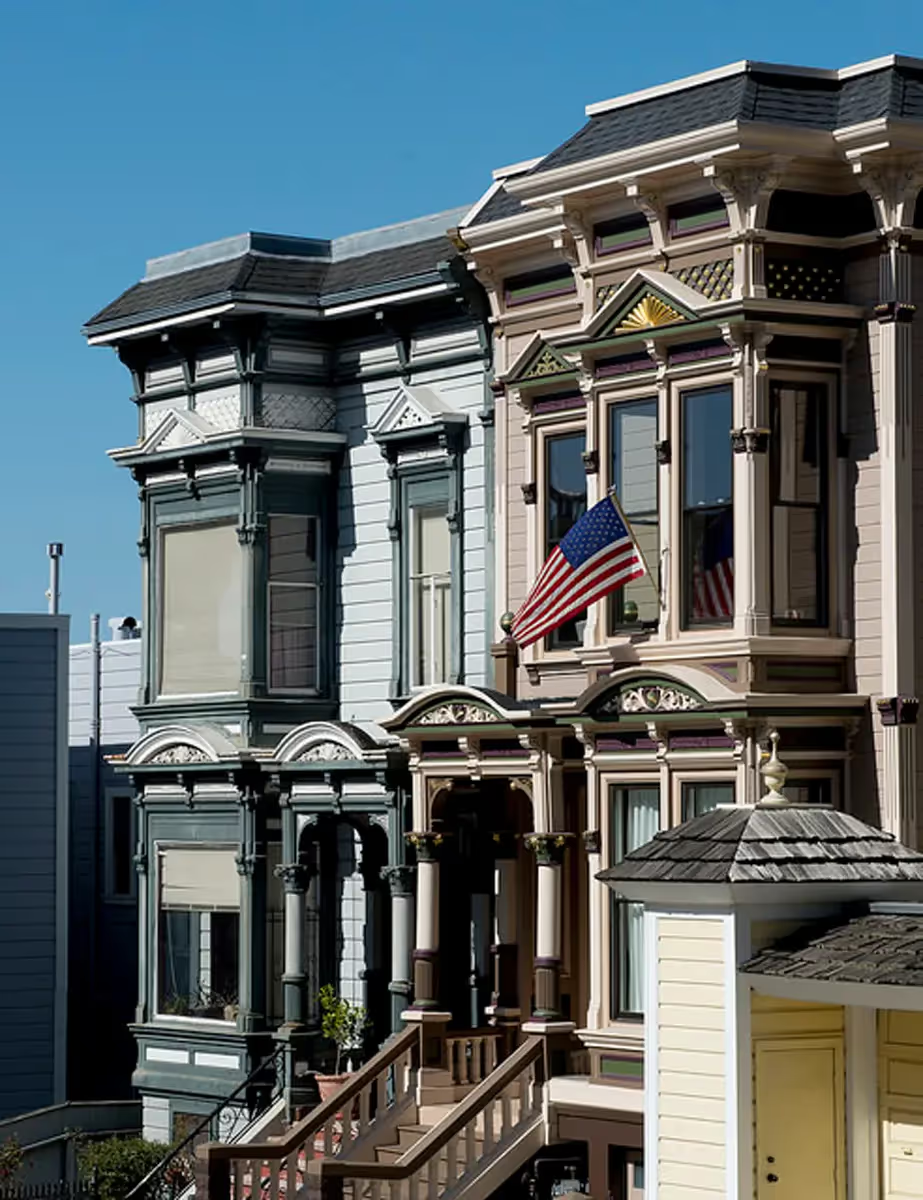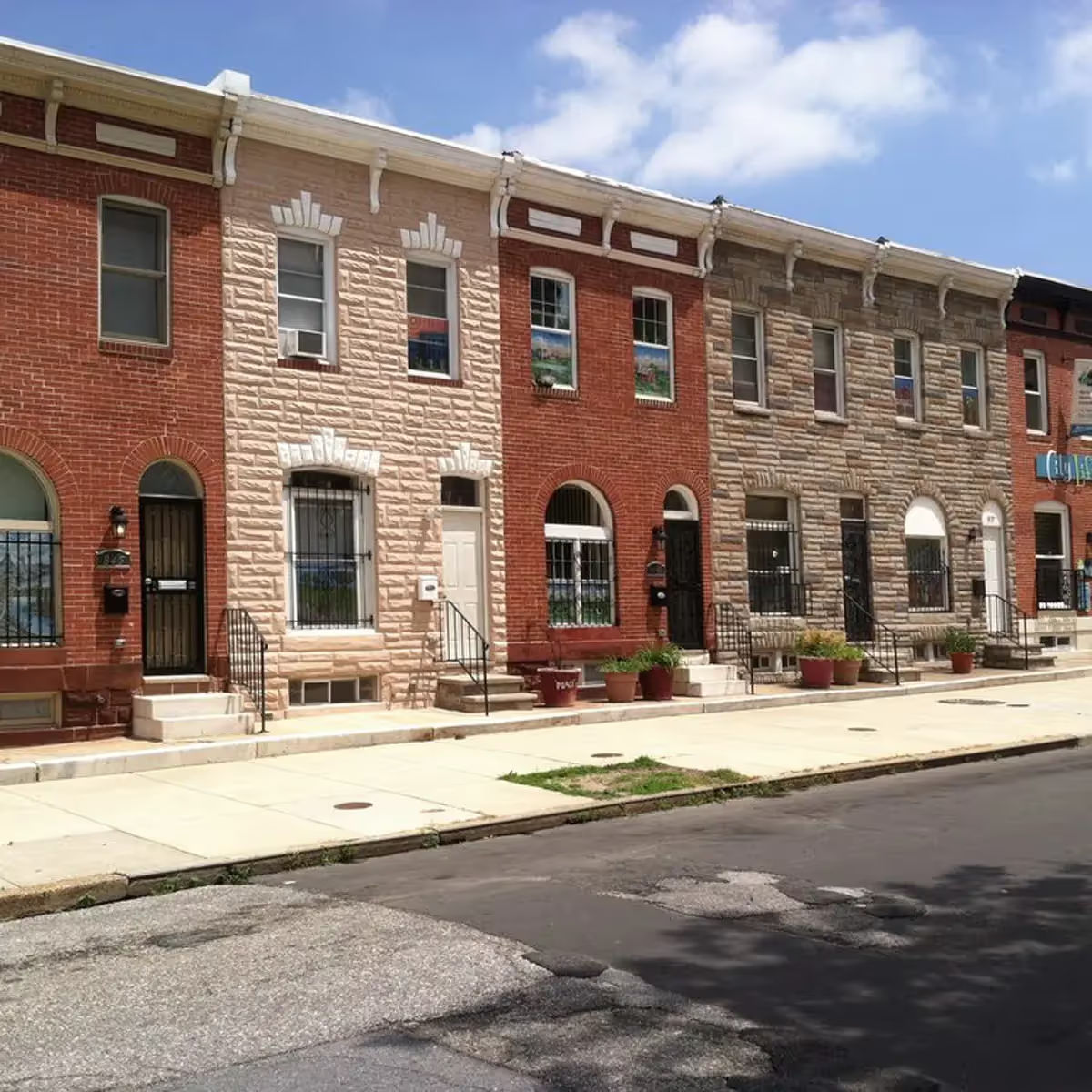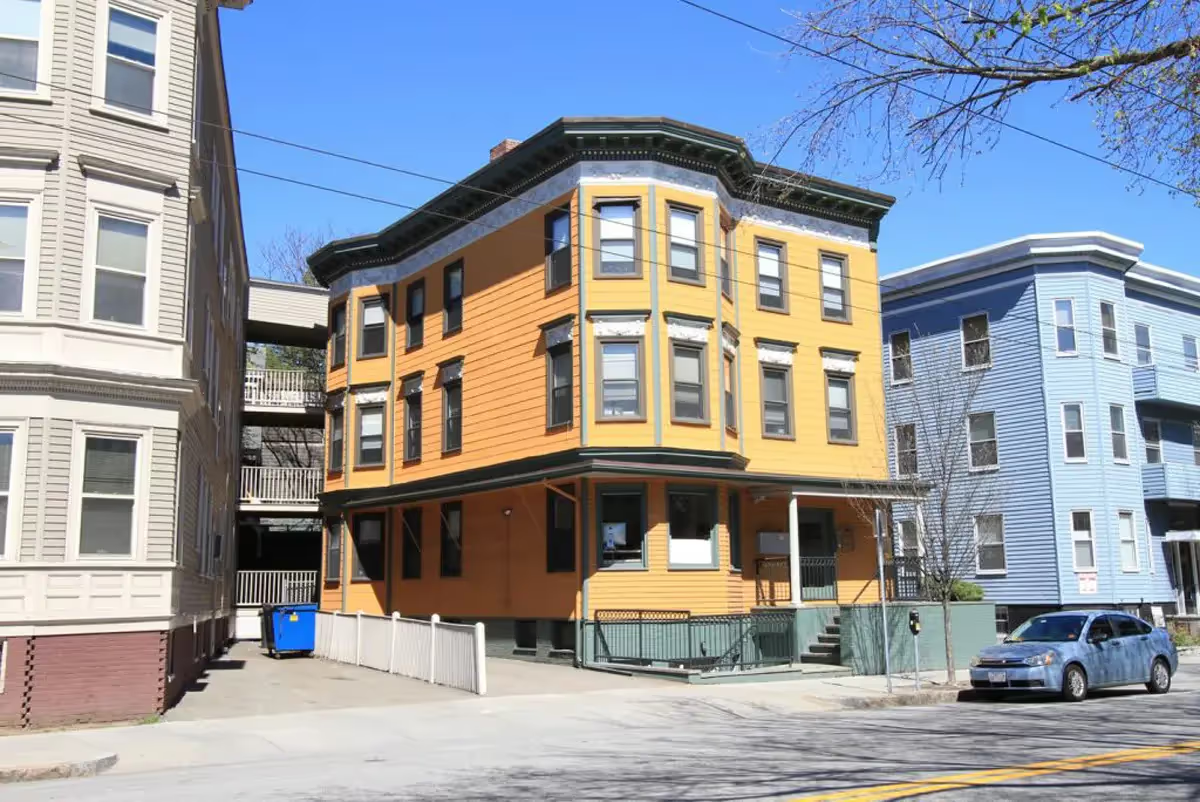Stop me if you've heard this one before: "Developers in my city are only building luxury housing. They're not building anything that ordinary people can afford."
This is a common lament in the tense debates over growth and development in many North American cities. Sometimes, the observation is made simply to call attention to the need for housing that's affordable to those across the income spectrum.
It may also, however, be used as an argument against market-rate housing development. “It's not going to help the people who truly need help," say those who favor maintaining strict local limits on the use, height, and intensity of development, to those who would relax such limits. If only well-to-do people who can already afford nice homes will benefit from new construction, why risk your community's character and stability and quality of life just to let developers make more money?
This notion that development's benefits accrue only to the well-off can engender a sort of defeatism among affordable housing advocates. Those who might stand to gain from additional investment in their neighborhoods aren't going to be motivated to come out and advocate forcefully for it if they don't think that they will be the beneficiaries.
Too often, however, the observation, "Developers are only building luxury housing," reflects a lack of understanding of the situation it describes. Why are developers in your community primarily building for the high end of the market?
If your gut reaction is “Greed!” please read further. Developers, yes, are in business to make a profit, and aren't easily persuaded to act contrary to that goal. But the actual issues surrounding what gets built, when, and for whom are far more complex.
We need a more sophisticated understanding of these problems, so we can have more sophisticated conversations about what to do about them.
Here are five reasons you might see your local developers primarily building homes that you and your neighbors can't afford.
1. New Construction is Expensive
The floor on home prices is ultimately set by the actual costs of building new housing. Fannie Mae reported an average of $192 per square foot for apartment buildings in 2017. This translates directly to monthly rent: depending on the assumptions you make (and there are many), the minimum viable rent for an average-sized apartment in that building might easily be over $1,500 per month, or even $2,000.
Similar math applies to single-family homes: according to data from the National Association of Home Builders, the median cost of constructing a single-family home in 2015 was $289,415, or $103 per square foot. Even if the land costs nothing, and the developer makes no profit, this is already out of reach of many would-be buyers.
It's not a new observation that construction cost alone situates brand new housing outside the budget of lower-income households. The same has been true in other eras. So how do these households afford housing at all?
The answer is filtering. As a building ages, it often becomes more affordable. The aesthetics are a bit dated; the place needs maintenance; the neighborhood that was once up and coming is now less so. Thus, older housing tends to "filter" down to a lower income bracket: the rich are buying the new stuff.
Think about who buys new cars versus used cars. It's not all that different. Yet, as Joe Cortright points out, "There's no outcry about America's affordable car crisis"—because America has plenty of affordable cars, just not affordable brand new cars.
And yet a lot of people dismiss filtering as magical thinking. "Oh, so you're saying we can build housing for the rich and it will just somehow trickle down to the poor?" I understand why the idea engenders intense resistance. It often involves a complicated chain of cause-and-effect, and so it can feel like an article of faith.
The skeptics have a point: at the neighborhood level, or the individual-home level, filtering doesn't behave like an inexorable rule. Various things can break the filtering chain. Gentrification can occur: a previously blighted neighborhood becomes desirable, resulting in rapidly increasing property values on those particular blocks. A softening housing market can unleash latent demand: someone who was living with roommates may decide to get their own place, or someone who opted not to move to a certain city may now decide they can afford to make a change after all. This increased demand can keep rents from falling outright.
Filtering is a very long-term process, and not every home will work its way down to become affordable to the working class. But that doesn't mean it's a not real phenomenon.
Most of us live in housing that has filtered. Only a small fraction of all the buildings in your city were likely constructed this year, or even this decade. It is unrealistic to expect new construction to solve our affordable housing problems, when new construction comprises a tiny share of the homes that exist.
Instead, we need to examine the forces that determine the price of already-existing homes and new homes alike. Chief among those forces is the interaction of supply and demand.
2. Supply and Demand are out of Whack
Let's get this out of the way: nine times out of ten, "luxury" is really just a marketing term. Most houses marketed as "luxury" aren't really luxurious in any meaningful sense of the word. Sure, if you've got a personal elevator, a home movie theater, or sixteen bedrooms, your house might be a luxury house. For most of us, though, "luxury" homes are totally ordinary homes for which some buyers and renters, if the market is hot enough, might be willing to pay luxury prices.
A simple thought experiment demonstrates this: Imagine that you could airlift a cute San Francisco Victorian house into East Baltimore. Would it still command San Francisco rents? Of course not.


Understand that when you talk about "luxury housing," you're really talking about luxury locations. If you build almost anything in Tribeca or Beverly Hills or Back Bay, someone will pay top dollar for it.
What makes a location a luxury location? Scarcity. It's when relatively few people can actually live there, in comparison to the number of people who would like to live there.
The term "housing shortage" gets bandied about a lot, and leads to a lot of confusion around these issues. How can there be a major housing shortage? Surely, if there were, we'd see vast armies of homeless wandering the streets, right?
It's hard to quantify a housing shortage because ultimately the number of households living in a given area is going to roughly equal the number of housing units in that same area. That is to say, most people will have a place to live. Those numbers will almost never be vastly out of sync with each other. What that rough equivalence hides, though, is the households that are displaced from the area entirely, or deterred from moving there in the first place.
A better way to measure whether supply and demand are in balance is the vacancy rate. High vacancy means that there are more available housing units then there is short-term demand for those units. As a result, homes are sitting empty. Given such an environment, landlords face incentives to reduce rents or offer other deals to get tenants into apartments.
In a low-vacancy environment, on the other hand, landlords and sellers can up their asking prices, since they're likely to have many prospective buyers or tenants competing for the same home.
Experts consider a healthy rental vacancy rate to be somewhere in the neighborhood of 5%, and there is evidence suggesting that the vacancy rate correlates strongly with the rate of rent increases over time. Take a look at this chart, based on rental data from Minneapolis.
The chart reveals that when the rental vacancy rate in the Twin Cities region was high, rents stayed stable or grew at around than the rate of inflation (about 2%). When the vacancy rate was low, on the other hand, average rents grew much faster from one year to the next.
Is the effect of vacancy on rents an exact science? Of course not. Will the results be predictable at the scale of a single neighborhood or street? No. Markets are complex systems with many interconnected feedback loops.

But even complex systems have an underlying mathematical logic to them. If there are more people that want to live in a place than there are places for those people to live, someone is going to lose that game of musical chairs. Seattle's Sightline Institute made this "Cruel Musical Chairs" video which starkly and powerfully illustrates the analogy.
If filtering is magical thinking, how is it any more magical than believing that if we stop adding more chairs, the rich—who could easily win the game of Housing Musical Chairs—will just walk away from it, leaving enough chairs (i.e. homes) for the rest of us?
3. Your City's Zoning Limits the Creation of Less-Expensive Housing
By limiting what can be built where, zoning and other land-use regulations may well restrict the total number of new homes in a given neighborhood, city, or even region to far fewer than the market would otherwise provide. Rick Jacobus, in this fantastic 2017 piece at Shelterforce, explains how this leads to the "luxury only" phenomenon by comparing developers to car manufacturers:
So no, the problem is not greed. The development industry is... behaving exactly the way we would expect any industry to respond to an artificial cap on their production volume. The same thing would happen in the auto industry: if we limited Toyota to only 100,000 cars per year, they might well choose to keep the Lexus and scrap the Camry, even though, at volume, the Camry is more profitable.
If land costs could be kept low—either by buying marginal, cheap land, or buying expensive urban land but distributing its cost over a large number of homes—developers might well find it profitable to build middle-income "Camry" housing at scale. But the first option, expansion on the suburban fringe, is fiscally ruinous for our communities, largely because of the colossal mismatch between the new public infrastructure those homes on the suburban will need and the tax actually generated by new suburban construction. And the second option, building more homes on the same amount of land, often can't happen because the zoning code says it can't.
One consequence of this is the proliferation of single-family teardowns in desirable urban neighborhoods. If the land is valuable, and all you can build on it is a single-family home, why not build a very expensive single-family home? Sightline has documented the spread of large homes in Portland that don't add any net new housing to the city, but were the most profitable thing developers were allowed to build on their lots.
This is why the proposal in Minneapolis's draft comprehensive plan to allow duplexes, triplexes, and fourplexes throughout residential neighborhoods is such a promising idea. Single-family homes in the city's toniest neighborhoods—particularly around the Chain of Lakes in its southwest corner—are already being torn down to build larger single-family homes. What if some of those were instead torn down to build triplexes or fourplexes?
These units would not be cheap, but they would be comparatively affordable, and this could have a fairly direct filtering effect. As people move into wealthy neighborhoods who might otherwise have lived in adjoining, more middle-class areas, there will be less competition for homes in those middle-class areas, and less upward price pressure.
To use the argument that newly constructed fourplexes will not be affordable to low-income residents as an argument against allowing them at all is entirely misguided.
4. Other Regulations are Driving up the Cost of Development
New development could be even cheaper if its costs were restricted to land and construction alone. But all sorts of other factors drive up the cost of development—and some of them are the result of well-meaning local regulations.
Many building codes, for example, require fire sprinklers in residential buildings. This is most common in apartment buildings, but California, Maryland, and Washington, D.C. require them in all homes. These requirements can add six figures to the cost of a project. Yet there is no epidemic of fire deaths in older buildings that are not equipped with state-of-the-art sprinkler systems. The sprinkler regulation, in isolation, is easy to defend on safety grounds; on the other hand, its cost, in the form of unbuilt housing that could have been, is harder to quantify and grapple with.
Most cities have parking minimums for residential development. These requirements result in the unnecessary construction of wasteful amounts of parking, which can add significantly to the cost of a project (which is passed on to the tenants in their rents).

Some cities require developers to use expensive materials for the facades of multifamily structures, to promote visual and architectural interest. Others require the dedication of land or money toward various public priorities as a condition of certain approvals. Still others have extensive stormwater management requirements that can make urban infill construction, in environments where there may not be much room for a lawn or retention pond, prohibitively expensive and difficult. Again, it's not that any of these things is a priori undesirable. It's that the tradeoff may hurt the affordable rental market disproportionately.
Another hidden cost of development can be the time delays involved in local government review processes. These delays, and the attendant uncertainty, impose very real monetary costs on developers, who have to control their land (and thus pay property taxes on it, as well as interest on any loans used to finance its purchase) while their proposed projects make their way through the approval pipeline.
One important effect of all of the above factors is to privilege large developers over small-scale ones, and those with the expertise (and cash reserves) to navigate a complicated regulatory process over those who are just learning the ropes and can't hire a fancy land-use lawyer. This, in turn, is a contributing factor to problem number five:
5. Your City Makes it Hard to Build Missing Middle Housing
Development cost does not increase in linear tandem with the size of a building, nor does it increase with the number of housing units it contains. It is more of a stair-step function: there are certain points where the cost jumps because different materials or construction techniques must be used, or different regulations apply. (For example, the Americans With Disabilities Act requires expensive elevators in apartment buildings, but exempts buildings that are fewer than three stories and/or less than 3,000 square feet per story.)

Missing Middle housing—buildings containing anywhere from 2 to 19 units—can be a sweet spot when it comes to construction cost. Duplexes through fourplexes in particular are built in much the same way as single-family homes, but the cost of the land is distributed across multiple households. Even cheaper to build than a duplex or fourplex is an accessory dwelling unit (ADU). It's no accident that a disproportionate share of America's existing "naturally occurring" (i.e. without subsidy) affordable housing takes Missing Middle forms.
Unfortunately, we've pretty systematically outlawed the Missing Middle in many neighborhoods. Single-family homes are the only thing that can be built on 80% of residentially-zoned land in Seattle, 53% even in renter-friendly San Francisco, and 50% in Philadelphia, to name just a few cities. In suburbs, it's common for over 90% of land to be zoned for single-family residences exclusively.
This leaves multifamily housing, more often than not, to take the form of large apartment complexes outside of such single-family areas, where a developer has able to assemble a large contiguous chunk of land. Those huge buildings are more expensive to build, both per square foot and overall.
A Strong Towns Alternative to Luxury-or-Bust
Is there any hope? If you want to see the market deliver new housing for the middle class, not just the well-to-do, is that possible? Anywhere?
It turns out there are some precedents for maintaining an affordable housing supply in big, prosperous, in-demand cities, and each one looks interestingly unlike the others and seems to offer its own lessons. Sightline profiles several success stories here.
We at Strong Towns are skeptical of pat answers and one-size-fits-all solutions. This doesn't mean total agnosticism: there are undeniable mathematical realities that tell us that expensive cities ought to be building more, not fewer, new homes. Otherwise, the game of Housing Musical Chairs will have a predictable result.
But “Build, Baby, Build”-by-any-means cheerleading may be a too-simplistic answer—especially if, in the process of zoning for very targeted areas of high density to encourage more building, your city ends up inviting speculation by land owners hoping for windfall gains. (Such speculation drives up land prices and works against affordability.)
A Strong Towns approach to housing affordability would be focused on allowing market signals to work again in every neighborhood: the places we live must be able to change, evolve, and, yes, grow if they are successful places where more people want to be. The antidote to the disruptive effects of big change is gradual change. The next increment of development—from single-family to duplex, duplex to small apartment building, small apartment building to larger apartment-building—should always be available.
The luxury-only problem is to a large extent a function of the fact that we have eliminated incremental change from most corners of our cities. Neighborhoods composed of single-family houses are declared almost entirely off-limits to development. In the remaining areas, we thus make sure that intense pent-up market demand is concentrated like a fire hose, and that development is undertaken primarily at large scales (giant apartment complexes) and in needlessly expensive ways.
No wonder "they only build luxury housing." We've made it pretty hard to afford to do anything else.





